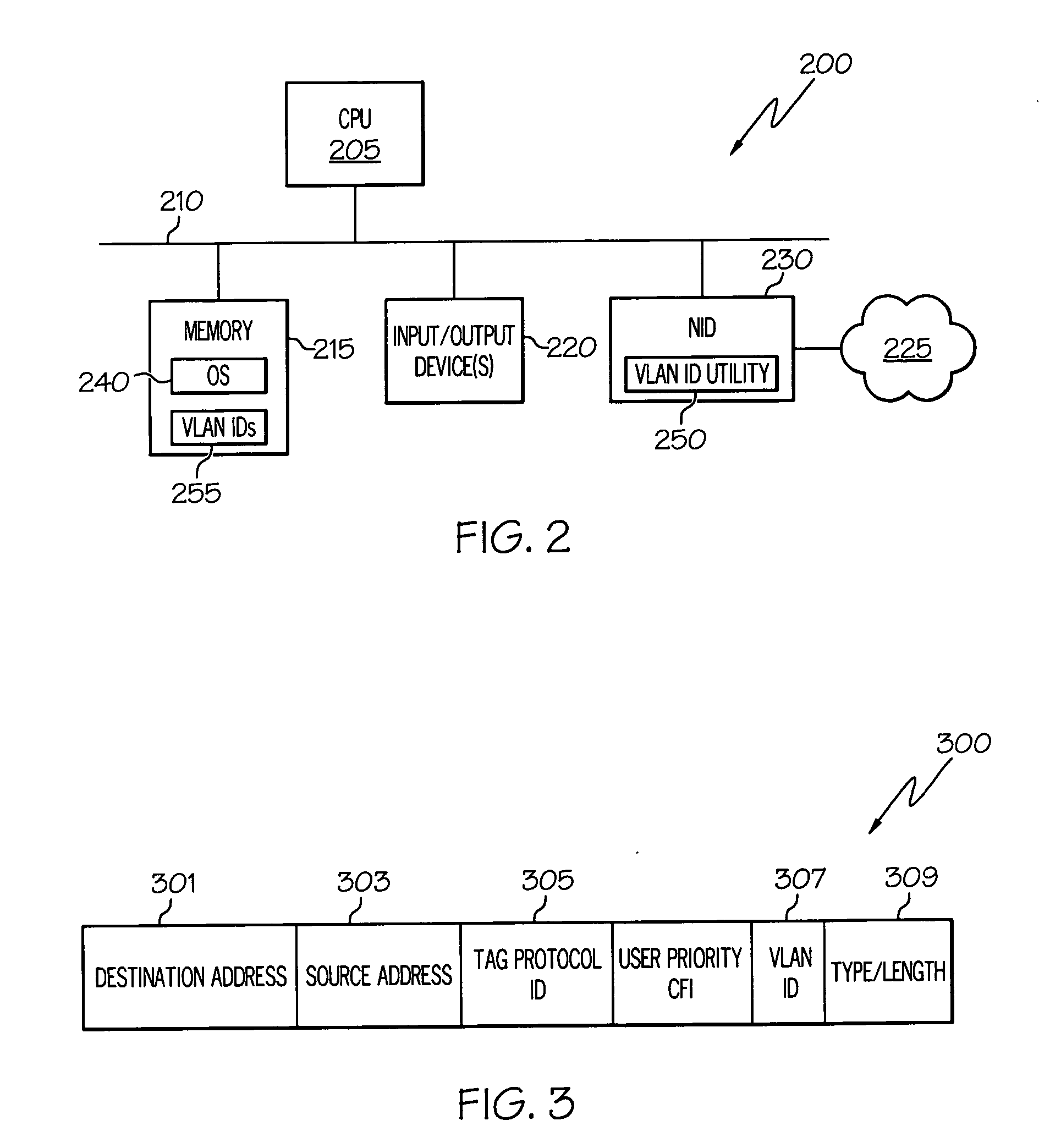Automatic VLAN ID discovery for ethernet ports
a technology of ethernet port and vlan, applied in the field of computer networks, can solve the problems of limiting the scalability of a network that utilizes 802.1q vlans, dropping packets, and the length of the vlan id field in the 802.1q vlan tag is 12 bits, so as to achieve the effect of safe assignment/utilization of vlan ids
- Summary
- Abstract
- Description
- Claims
- Application Information
AI Technical Summary
Benefits of technology
Problems solved by technology
Method used
Image
Examples
Embodiment Construction
[0018] The present invention provides a method, system and network protocol that enables each host within a virtual local area network (VLAN) environment to automatically discover to which VLANs the host belongs, without any explicit administrative configuration. When a host initially sets up a communication interface, the host generates a series of probing packets, each tagged with (or including within its header) a different one of the range of possible VLAN IDs. According to the illustrative embodiment described using the IEEE 802.1Q protocol, the range of valid VLAN IDs is 1 through 4094. The probing packets request a response from the network for each potential VLAN ID the port belongs to.
[0019] The probing packet triggers a response that ultimately indicates whether the corresponding VLAN (identified by the VLAN ID) is supported by the switch. The switch automatically drops any packets with a VLAN ID not recognized (i.e., supported or configured) in the switch. The packets be...
PUM
 Login to View More
Login to View More Abstract
Description
Claims
Application Information
 Login to View More
Login to View More - R&D
- Intellectual Property
- Life Sciences
- Materials
- Tech Scout
- Unparalleled Data Quality
- Higher Quality Content
- 60% Fewer Hallucinations
Browse by: Latest US Patents, China's latest patents, Technical Efficacy Thesaurus, Application Domain, Technology Topic, Popular Technical Reports.
© 2025 PatSnap. All rights reserved.Legal|Privacy policy|Modern Slavery Act Transparency Statement|Sitemap|About US| Contact US: help@patsnap.com



